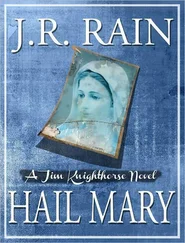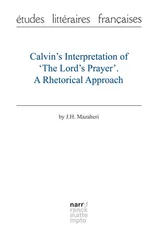Helge Fauskanger - J.R.R. Tolkien’s Lord’s prayer and Hail Mary in Quenya - Syntactical and Etymological Analysis
Здесь есть возможность читать онлайн «Helge Fauskanger - J.R.R. Tolkien’s Lord’s prayer and Hail Mary in Quenya - Syntactical and Etymological Analysis» весь текст электронной книги совершенно бесплатно (целиком полную версию без сокращений). В некоторых случаях можно слушать аудио, скачать через торрент в формате fb2 и присутствует краткое содержание. Жанр: Языкознание, на английском языке. Описание произведения, (предисловие) а так же отзывы посетителей доступны на портале библиотеки ЛибКат.
- Название:J.R.R. Tolkien’s Lord’s prayer and Hail Mary in Quenya: Syntactical and Etymological Analysis
- Автор:
- Жанр:
- Год:неизвестен
- ISBN:нет данных
- Рейтинг книги:5 / 5. Голосов: 1
-
Избранное:Добавить в избранное
- Отзывы:
-
Ваша оценка:
- 100
- 1
- 2
- 3
- 4
- 5
J.R.R. Tolkien’s Lord’s prayer and Hail Mary in Quenya: Syntactical and Etymological Analysis: краткое содержание, описание и аннотация
Предлагаем к чтению аннотацию, описание, краткое содержание или предисловие (зависит от того, что написал сам автор книги «J.R.R. Tolkien’s Lord’s prayer and Hail Mary in Quenya: Syntactical and Etymological Analysis»). Если вы не нашли необходимую информацию о книге — напишите в комментариях, мы постараемся отыскать её.
J.R.R. Tolkien’s Lord’s prayer and Hail Mary in Quenya: Syntactical and Etymological Analysis — читать онлайн бесплатно полную книгу (весь текст) целиком
Ниже представлен текст книги, разбитый по страницам. Система сохранения места последней прочитанной страницы, позволяет с удобством читать онлайн бесплатно книгу «J.R.R. Tolkien’s Lord’s prayer and Hail Mary in Quenya: Syntactical and Etymological Analysis», без необходимости каждый раз заново искать на чём Вы остановились. Поставьте закладку, и сможете в любой момент перейти на страницу, на которой закончили чтение.
Интервал:
Закладка:
sí ar lúmesse ya firuvamme : násie :
now and in the hour of our death. Amen.
sí"now", ar"and", lúmesselocative of lúme "hour", ya"which", firuvamme*"we shall die" ( fir-uva-mme "die-shall-we"). The ending - mme represents an exclusive "we", the natural form to use here since the one that is addressed is not included in "we": This is a group ("us sinners") addressing someone outside that group (Mary, among Catholics held to be sinless), not another sinner within the group. – As for lúmesse ya firuvamme , these Quenya words literally mean *"in [the] hour that we shall die"; Tolkien did not directly translate the English wording "in the hour of our death" (the literal Quenya equivalent of which would have been rather * i lúmesse qualmemmo ). The construction lúmesse ya firuvamme may be seen as a shortening of the syntactically "fuller" * lúmesse yasse firuvamme , "in [the] hour in which we shall die", the relative pronoun ya receiving the locative ending as well ( ya with the plural locative ending - ssen is attested in Namárië in LotR, that has yassen for "wherein" referring to the plural word oromardi "high halls"). But this "full" construction would perhaps be perceived as somewhat cumbersome, the locative ending occurring in two consecutive words, and so ya "that, which" is used like English that in a phrase like "the year that we moved" (instead of "the year in which we moved"). – Like the Lord’s Prayer, Hail Mary ends in a násie"amen" or *"so it is".
4. Lexical/Etymological Commentary: Discussion of Individual Words
á, imperative particle used in conjunction with an uninflected verbal stem: á hyame pray! The particle has no ready English equivalent; it is simply used in conjunction with a verbal stem to make it clear that this verb is to be taken as an imperative. The sentence á vala Manwein WJ:404 Tolkien translated "may Manwe order it"; a more literal translation could be * do rule Manwe (if we make an effort to translate áas a separate word). This áwould represent primitive â , said to be an "imperative particle…originally independent and variable in place" (WJ:365, 371). As mentioned in the Syntactical Commentary above, the imperative particle occurs in LotR in the variant form a(as a short vowel) as part of the Cormallen Praise: A laita te, laita te. This is translated "bless them, bless them" in Letters:308; more literally it is * o bless them, bless them . The text before us indicates that short pronouns (accusative or dative) may be suffixed directly to this particle: áme do [something to] us , ámen do [something] for us ; see separate entry ámefor further discussion. The particle also appears in a negated form # ála, q.v.
aia, interjection hail . Only the spelling is new; this interjection is attested in LotR. Frodo "speaking in tongues" in Cirith Ungol cried Aiya Eärendil Elenion Ancalima= Hail Eärendil, brightest of stars (translated in Letters:385). As for the variant spellings, compare primitive wâyâ envelope yielding both vaiaand vaiyain Quenya (LR:397 s.v. way-). Already in his very early notes on "Qenya" phonology, Tolkien mentioned the variation aiy-/ ai-, noting that a word like paiyan("oration") was "also written paian " ( Parma Eldalamberon #12 p. 8). It is interesting to notice that PM:363, 364 mentions Máyaras an alternative form of Maiar(the lesser spirits of the race of the Valar, cf. MR:340). It seems reasonable to assume that the oldest Quenya form of primitive wâyâ envelope was * wáya(paralleling Máyar), later becoming (* waiya>) vaiyaand still later vaia(paralleling Maiar; at the same stage that had vaiya, the lesser Ainur would presumably be termed * Maiyar). Aiyaand aiaas variant words for hail may thus simply represent an older and a "modern" form of the same word; the difference in pronunciation is in any case slight, and in the case of paiyanvs. paianTolkien seemingly implied that the variation is merely orthographic. (The oldest forms of aiawould be appreciably different: archaic Quenya * áyaand primitive Elvish * âyâ.) As for the precise etymology of this word, we cannot be certain what Tolkien intended. The first part of * âyâcould somehow be related to the Quenya vocative particle a, as in Treebeard’s greeting to Celeborn and Galadriel: a vanimar o beautiful ones (translated in Letters:308). The ending *- yâis frequently used to derive both adjectives and verbs; perhaps Quenya ai( y) acan also be used as a verb, like English to hail . It is, however, interesting to notice that a word similar to our suggested oldest Quenya form of aia/ aiya, namely * áya, is actually attested in PM:363: "Quenya áya meant… awe ." This is the same source (indeed the same page) that provides the form Máyarrather than Maiar, so áyaand Máyarmost likely belong to the same stage of Quenya. If Máyarlater became Maiar, áya awe presumably also turned into * aia- wholly similar to the word for hail used in the text before us. Is it, indeed, the same word, so that we could drop the asterisks? If so, the Quenya interjection ai( y) a hail actually or originally means awe , and its use as a greeting would in origin be an expression of deep respect felt by the speaker for the one that is being greeted. If this is the correct etymology, aia hail does not represent primitive Elvish * âyâas suggested above, but primitive gâyâ, a form given in PM:363. The original meaning was harsher than just "awe"; Tolkien glossed it "terror, great fear". (Tolkien imagined that in Quenya, the meaning was softened because after the regular loss of initial g-, the word came to be associated with Valarin ayanu- or ayanûz, a spirit of Eru’s first creation, which word was adapted to Quenya as Ainu; see PM:364 and WJ:399. The Valar being the most prominent Ainurin Arda, áyacame to refer especially to the awe the Elves felt for these mighty spirits, and the word took on a noble sense.) Primitive gâyâwas derived from a Common Eldarin stem gaya "awe, dread" (cf. gáyas "fear" in the Etymologies , LR:358; this could be an extended form of gaya).
aire, adjective holy : na aire esselya* may thy name (be) holy , aire María holy Mary . One’s first assumption would be that this is the same element aireas in Namárië, in the compound airetári-lírinen in…her song, holy and queenly (literally rather *"by holy-queen-song"). In the prose version of Namárië, Tolkien rephrased this into lírinen aire-tário, rendered song-in holy-queen’s in his interlinear translation (RGEO:67). Here one cannot avoid getting the impression that aireis the word for holy (and as I shall demonstrate, this is probably what Tolkien originally intended). However, in a post-LotR source this adjective is given as airainstead: PM:363. The primitive form is not quoted there, but we can evidently find it in WJ:400: gairâ awful , fearful said to come from the stem gay- astound , make aghast , clearly the same as gaya awe , dread in PM:363. (The fact that this stem may be glossed both as a noun and a verb should not be allowed to trouble us, since the glosses of a primitive root-word often cannot be "exact": Rather than being a useable word itself, the root is raw-material for actual words, so the glosses only hint at the general meaning: The glosses "astound, make aghast" and "awe, dread" obviously revolve around the same theme.) The phonetic development gairâ> airais simple enough, and the semantic development from awful , fearful to holy is not implausible either, if what is holy is that which is "awful" in the true sense of the word: awe-inspiring, object of reverent fear. (In trying to explain why primitive gairâ> Quenya airacame to acquire a more elevated sense, Tolkien also let the "loremasters" invoke the influence from Valarin ayanu- or ayanûz. See aiaabove.) In gairâ, we see the relatively well-attested adjectival ending - râ(cf. for instance such a primitive form as ubrâ abundant from ub- abound , LR:396, or indeed primitive gaisrâ dreadful from gáyas- fear in LR:358: very similar to gairâin both form and meaning). Yet all of this may in a way be beside the point, for an ancestral form gairâis only capable of yielding Q aira, and in the text before us the word appears as aireinstead. Airecould of course be the plural form of aira(in such a case representing older * airai), but it cannot be plural here, since the nouns it modifies – "thy name" and "Mary" – are both singulars occurring separately. It could also be a nominal form of aira: "The adjective aira was the nearest equivalent to holy , and the noun airë to sanctity . Airë was used by the Eldar as a title of address to the Valar and the greater Máyar. Varda would be addressed as Airë Tári . (Cf. Galadriel’s Lament, where it is said that the stars trembled at the sound of the holy queen’s voice…)" (PM:363-364, reproducing a source no earlier than February 1968, cf. PM:331.) This, then, is how Tolkien now wanted to explain the element airein airetári-lírinenin Namárië. Yet the text before us, certainly written long before 1968, gives away that this was not his original idea. True, aire Maríafor holy Mary could be explained as a construction similar to Airë Tári Holy Queen , or literally * (your) sanctity/holiness, (the) Queen . If Varda (Elbereth) can be addressed as Airëor "Sanctity", we must assume that this title is equally applicable to Mary as she appears in Catholic thought: Indeed Tolkien stated that the good peoples of Middle-earth "may call on a Vala (as Elbereth ), as a Catholic might on a Saint" (Letters:193, footnote). Yet we cannot explain na aire esselyain the same way; assuming that this is literally *"may thy name [be] a sanctity" seems rather far-fetched. The conclusion that Tolkien when writing the texts before us thought of aireas an adjective and not as a noun may not be literally inescapable, but it is overwhelmingly probable. Originally Tolkien seems to have imagined a different etymology. The past participle aistana blessed (see below) may very well be related to aire holy ; if so it gives away that the rof the latter word was originally s: In Quenya, sin certain positions became voiced to z, in turn becoming r; however, in front of an unvoiced plosive like t(as in aistana, q.v.), it could not change. If airewas once * aize< * aise, we may assume an even earlier, primitive form * gaisithat would allow us to connect this adjective with gais-, cited in LR:358 as one primitive incarnation of the stem gáyas- fear . We have already pointed out that this could be merely a variant of the gay- astound , make aghast or gaya awe , dread that appears in later sources (PM:363, WJ:400) – exactly the stem(s) from which Tolkien would later derive the word for "holy". We need not doubt that the primitive adjective ended in - i; this is evident from the past tense verb airitáne hallowed , occurring in the Ms. Tolkien Drawing 91, 41v, dating to ca. 1966 and now at the Bodleian (see Vinyar Tengwar #32, November 1993, page 7, where Carl F. Hostetter volunteers this information from an unpublished manuscript). This probably represents primitive * gaisitâ-nê, the verb * gaisitâ- hallow being constructed from * gaisi- holy with the verbal ending - tâ, here causative: hence make holy = hallow . As for the adjectival ending - iin * gaisi(becoming Quenya - ewhen final), compare primitive karani red yielding Quenya karne(LR:362 s.v. karán-). If we dare to start speculating why Tolkien eventually decided to change the adjective holy from aireto aira, the very word karne( carne) may – perhaps – provide a hint. In the first edition of LotR, the Ent Bregalad in a song used the word carnemíriëof his rowans (LotR Volume 2, Book Three, chapter IV). In Letters:224, Tolkien explained that this word means "with adornment of red jewels", literally rather * red-jeweled . The adjective carne-, descended from older karani, here appears as a prefix. Yet the change of primitive short - ito - ewas only supposed to occur finally . Where not final, as in a compound, this vowel maintained its original quality. Compare Quenya varne brown , derived from a stem barán- (just like karani> Q carne red comes from karán-) and undoubtedly meant to represent a primitive word * barani: In the case of varne, Tolkien explicitly noted that this becomes varni- when followed by another element (LR:351). Obviously carne red likewise ought to appear as carni- in compounds, and hence Tolkien changed the word carnemíriëto carnimíriëwhen the revised version of LotR appeared in 1966. With this we finally catch up with our point: if carne red becomes carni- in compounds (the iof primitive karaniretaining its original quality when not final), then an adjective aire holy derived from * gaisilikewise ought to manifest as airi- in compounds. Airetáriin Namárië "should" have been * airitáriinstead! Yet Tolkien failed to correct this when he emended carnemíriëto carnimírië. If our theory is correct, Tolkien may in the end have felt that he had no choice but to reinterpret the aireof airetári. A (singular) Quenya adjective in - ecan only represent a primitive form in - i, and this - i- should be unchanged whenever not final; hence there is simply no way the first element of airetári can be an adjective. However, Tolkien readily came up with a new interpretation that would still leave the translation of Namárië in LotR more or less correct: While ómaryo aire tári-lírinenmay be rendered in the voice of her song, holy and queenly , it "turned out" that this aireis not the adjective holy after all. It is "actually" a noun sanctity , formed from the real adjective holy , which is aira. Thus Tolkien managed to plausibly explain (away) the linguistic inconsistencies, though they would have troubled very few readers! However, his translation of the Lord’s Prayer, probably about contemporaneous with the publishing of LotR, gives away that originally airewas precisely what it would seem to be in Namárië: the adjective holy . The alternative explanation must have emerged very late; airitánerather than * airatánefor hallowed in a late (ca. 1966) manuscript seems to indicate that Tolkien at this point still thought of aire, airi- as the word for holy . Earlier, he perhaps planned to explain Airetári(rather than * Airitári) in Namárië as a form coined on analogy with the simplex aire. Another solution could be that this is better taken as a loose compound Aire Tári(a two-word spelling is actually used in PM:363), though it "happens" to be written in one word in the text in LotR.
Читать дальшеИнтервал:
Закладка:
Похожие книги на «J.R.R. Tolkien’s Lord’s prayer and Hail Mary in Quenya: Syntactical and Etymological Analysis»
Представляем Вашему вниманию похожие книги на «J.R.R. Tolkien’s Lord’s prayer and Hail Mary in Quenya: Syntactical and Etymological Analysis» списком для выбора. Мы отобрали схожую по названию и смыслу литературу в надежде предоставить читателям больше вариантов отыскать новые, интересные, ещё непрочитанные произведения.
Обсуждение, отзывы о книге «J.R.R. Tolkien’s Lord’s prayer and Hail Mary in Quenya: Syntactical and Etymological Analysis» и просто собственные мнения читателей. Оставьте ваши комментарии, напишите, что Вы думаете о произведении, его смысле или главных героях. Укажите что конкретно понравилось, а что нет, и почему Вы так считаете.












